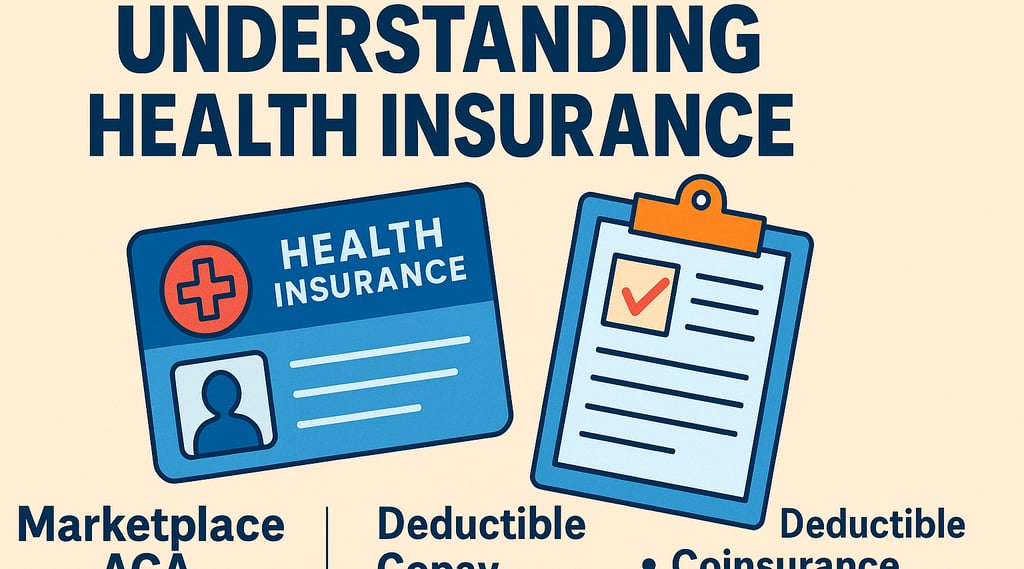Understanding Health Insurance: Marketplace, ACA, and Private Plans
A Guide to the Right Plan for you!
Trevor Evans
9/22/20252 min read


Understanding Health Insurance: Marketplace, ACA, and Private Plans
Health insurance can feel complicated, but at its core, it’s about protecting yourself from overwhelming medical costs. Whether you enroll through the Marketplace/ACA (Affordable Care Act) or purchase private health insurance, the right plan provides peace of mind, access to care, and financial protection when you need it most.
Let’s break it down in simple terms so you can see the value and make informed choices.
Why Health Insurance Matters
Protection from high costs: A single ER visit or hospital stay can cost thousands of dollars. Insurance shields you from paying the full bill yourself.
Preventive care: Most ACA/Marketplace plans cover preventive checkups, screenings, and vaccines at no extra cost.
Access to doctors and hospitals: Health insurance connects you with networks of providers so you can get the care you need.
Financial stability: Knowing your maximum out-of-pocket limit helps you plan for the worst while staying in control of your budget.
Types of Health Insurance
Marketplace / ACA Plans
Available through Healthcare.gov or state exchanges, these plans are regulated and must cover essential health benefits like maternity, mental health, prescriptions, and more. Many people qualify for premium tax credits (subsidies) that lower monthly costs.Private Health Insurance
Purchased directly through an insurance company or broker, private plans can sometimes offer different networks, benefits, or flexibility outside of ACA options. For those who don’t qualify for subsidies, private insurance can sometimes be a strong alternative.Short-Term Health Plans
Designed for temporary gaps in coverage (like between jobs). These are not ACA-compliant, so they often don’t cover pre-existing conditions or essential benefits—but they may help in the short run.
Key Terms Made Simple
Premium
The amount you pay each month for your health plan (like a subscription fee).Deductible
The amount you pay out of pocket before your insurance starts covering major costs. Example: If your deductible is $2,000, you pay that much first, then your insurance kicks in.Copay
A fixed fee you pay for specific services, like $25 for a doctor visit or $10 for a prescription.Coinsurance
Instead of a flat fee, this is a percentage you pay after meeting your deductible. Example: Insurance pays 80%, you pay 20%.Out-of-Pocket Maximum
The most you’ll pay in a year for covered services. Once you hit this limit, your insurance pays 100% of covered costs for the rest of the year.
Choosing What’s Right for You
Families may benefit from ACA plans with strong preventive and pediatric care.
Self-employed professionals often explore private or Marketplace plans depending on subsidy eligibility.
Those between jobs sometimes use short-term plans as a bridge.
The best plan is the one that balances monthly cost (premium) with what you’d pay if you got sick (deductible, copays, out-of-pocket).
✅ Bottom line: Health insurance isn’t just about paying medical bills—it’s about protecting your finances, your health, and your peace of mind. Understanding the basics helps you choose the plan that truly fits your needs.
Tailored To You Insurance
Come Follow Us on Social Media!
Contact
Support
© 2025 Tailored To You Insurance | Serving Palm Beach, Lake Worth & 40+ States | Privacy Policy | Terms of Service
